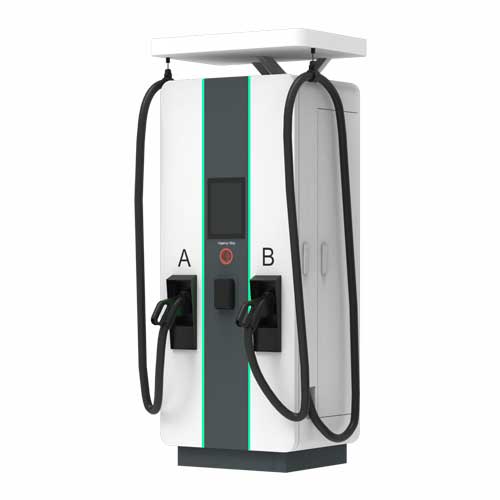Whether it is used in parking lots, shopping malls or fleets, the 150 kW charging station is a reliable and convenient choice. It has a high power output of 150 kW to quickly charge your electric vehicle.
Our direct current (DC) charging station provides 150 kW fast charging speed, allowing you to charge at the fastest speed. High-performance Level 3 fast charging stations are ideal for electric vehicles and light electric trucks. Modular and scalable direct current (DC) fast charging system is designed to achieve more cost-effective operation and infrastructure deployment. Increase your charging speed and power to 20% higher than the industry standard in the same time.
The product parameters of the 150 kW charging station are as follows:
Parameters | Requirements | ||
General Requirements | |||
EV Charger Type | DC | ||
Charger Capacity | 150KW | ||
Equipment size | L750*W750*H1920mm/L720*W401*H2000mm | ||
Product Model NO. | ENC-DCL160B | ANSI-DCL160B | JIS-DCL160B |
Mounting | Ground-Mounted | ||
Input Requirements | |||
AC Supply System | Three-Phase, 5 Wire AC system | ||
Nominal Input Voltage | AC380V±15% | ||
Input Frequency | 45-65Hz | ||
Environmental Requirements | |||
Ambient Temperature Range | -25 to 55°C | ||
Ambient Humidity | 5 to 95% | ||
Storage Temperature | -40 to 70°C | ||
Mechanical Requirements | |||
IP Ratings | IP 54 | ||
Cooling | Air-cooled | ||
Output Requirements | |||
Number of Outputs | 2 | ||
Type of Each Output | 200-1000VDC | ||
Single Output Max.Current | 250 Amp | ||
Power Factor | ≥0.99(50% load above) | ||
User Interface & Display Requirements | |||
Display & Touch-Screen Size | 7 Inches Touch Screen with Shell | ||
User Authentication | QR Code/RFID Card /Password Login | ||
Metering Information | Consumption Units | ||
Communication Requirements | |||
Communication between EVSE and Central server | OCPP 1.6J Protocol (Optional) | ||
Interface between Charger and CMS | Ethernet/3G/4G/WIFI (Optional) | ||
Protection & Safety Requirements | |||
Executive Standard | IEC 62196 2017, IEC 61851 2017, SAE J1772,CHAdeMO etc. | ||
Safety Parameters | Over Current, Over Voltage, Under Voltage, Residual Current, Surge Protection, Leakage Protection, Short Circuit, Over Temperature, etc. | ||










